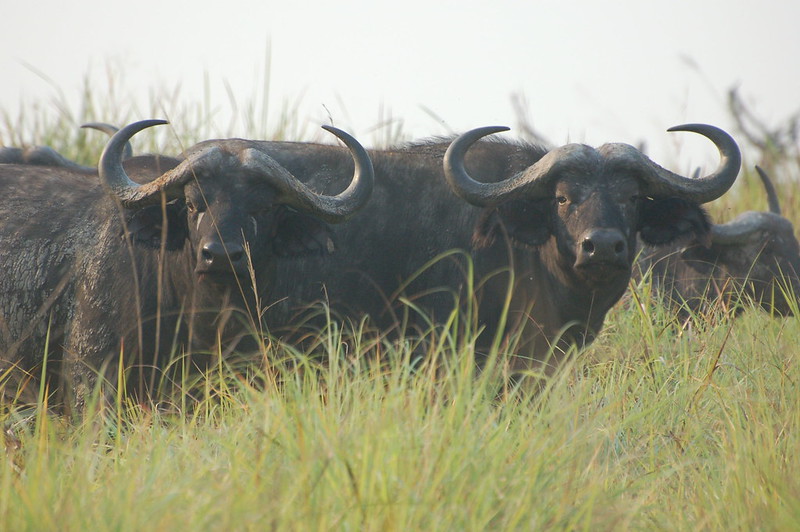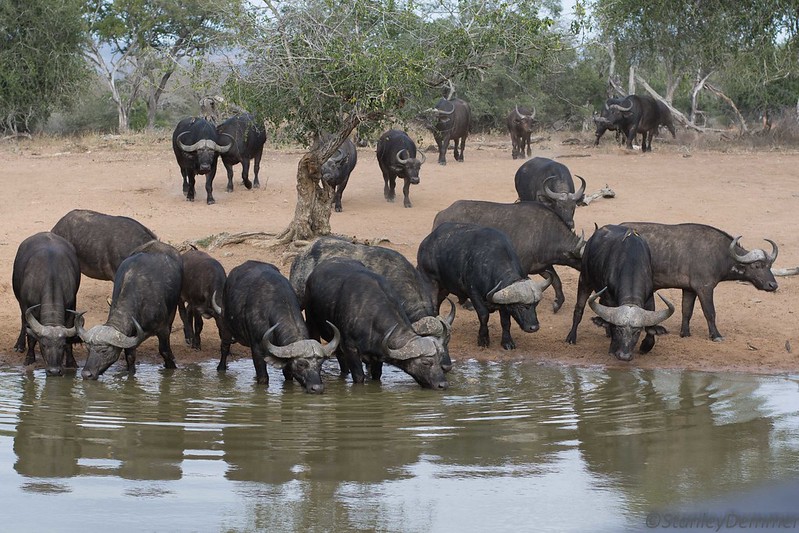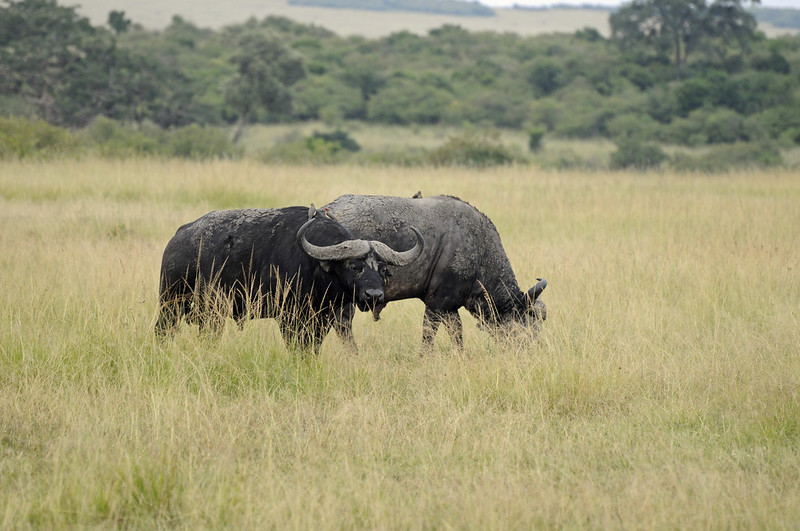African Buffalo (Syncerus caffer)
African Buffalo: The Mighty Beast of the Wild
The African buffalo, one of the Big Five, is a powerful and resilient herbivore known for its strong social bonds and formidable presence. These large, horned creatures are found across sub-Saharan Africa, roaming grasslands, woodlands, and savannas in massive herds. Buffaloes are notorious for their unpredictable nature and are considered one of the most dangerous animals in Africa, capable of defending themselves fiercely against predators. Their critical role in the ecosystem, from maintaining grasslands to fertilizing soil, makes them an essential part of Africa’s wildlife.
The African Buffalo: Facts, Behavior, and Where to Spot Them While In Africa
Where to Find the African Buffalo on Safari
The African buffalo is one of the most iconic animals you can spot on a safari, renowned for its strength, endurance, and formidable presence. Found across sub-Saharan Africa, buffaloes prefer open woodlands, grasslands, and savannas, where they can roam in herds and graze on vast expanses of grass. While you’re most likely to encounter them in renowned wildlife areas like the Serengeti in Tanzania, Masai Mara in Kenya, Kruger National Park in South Africa, and Etosha National Park in Namibia, buffaloes can also be found in smaller reserves throughout southern and eastern Africa.
Best Time to See Buffalo
Buffaloes are active during both the day and night, but early morning and late afternoon provide the best opportunities for sightings when they’re out grazing and drinking from waterholes. The dry season, from June to October, is particularly favorable, as animals gather around water sources, making it easier to spot large herds of buffalo.
The African Buffalo: A Powerhouse of the Plains
Why Buffaloes Are So Important to Africa’s Ecosystems
The African buffalo, a member of the Big Five, is much more than just a large herbivore. It plays a key role in maintaining the balance of its ecosystem. By grazing on grasses and shrubs, buffaloes help keep the landscape open, which in turn benefits other species, like smaller antelopes that rely on open grasslands for feeding. Additionally, their manure provides nutrients that help fertilize the soil, creating a healthier environment for plants and other animals.
Buffalo Behavior: Understanding Their Strength and Social Structure
What Makes the African Buffalo So Dangerous?
Buffaloes are powerful, unpredictable, and protective of their herds. They are considered one of the most dangerous animals in Africa, responsible for more deaths of hunters than any other animal on the continent. This is due to their unpredictable nature and the sheer power behind their charge. When threatened, buffaloes are not shy to confront predators, including lions, with incredible strength and coordination.
Their social structure is equally fascinating. Buffalo herds are typically led by older, experienced females, and within the herd, there is a strong sense of loyalty and protection. If one member is threatened or injured, the others will often rally together to protect it. This teamwork and solidarity make buffaloes even more formidable on the plains.
How to Spot Buffalo on Safari: Tips and Tricks
Best Safari Parks to See Buffaloes
When planning a safari to see buffaloes, focus on reserves that host large populations of wildlife. Some of the best spots for buffalo sightings include:
Serengeti National Park (Tanzania)
Masai Mara National Reserve (Kenya)
Kruger National Park (South Africa)
Etosha National Park (Namibia)
Chobe National Park (Botswana)
In these areas, buffaloes are often seen in large herds, grazing in open plains or near watering holes, making it easier to spot them.
Buffalo Facts: Fascinating Insights Into One of Africa’s Most Resilient Creatures
Fun Facts About Buffaloes
Impressive Herds: Buffalo herds can number in the hundreds, providing a striking visual on safari.
One of the Big Five: Buffaloes are one of the most sought-after animals to see on safari, alongside lions, leopards, elephants, and rhinoceros.
Resilient Survivors: Buffaloes can live for up to 20 years in the wild, and some have been known to survive attacks from lions or crocodiles.
Distinctive Horns: The horns of an adult buffalo can weigh up to 40 pounds, and they curve outward in a wide arc, creating a “boss” in the middle that forms a shield-like shape.
Why the Buffalo Is a Must-See on Your Safari
The African buffalo is one of the continent’s most remarkable creatures, embodying the power and resilience of the wild. With their strong, imposing presence and complex social dynamics, buffaloes are a true symbol of the African wilderness. Whether you’re tracking them through the plains or witnessing the dramatic confrontations with predators, buffaloes provide one of the most thrilling experiences for any safari-goer. Spotting a buffalo herd is a highlight that can’t be missed during your African safari.





